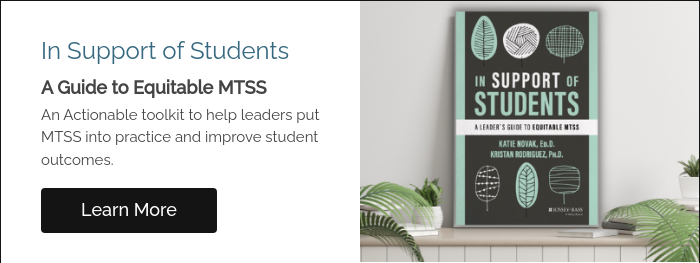When change is implemented in an organization, it sparks curiosity and a desire for more information. And we know that change is not always met with enthusiasm, which is why we must incentivize and strategically approach change. We must have responses ready for the hard questions you may face. So when a team member says,
"Why are we doing this?", "This is too much to take on!" or "This won't work!"
Take a deep breath and remember, this isn't an attack on you. This reaction is based on the feelings of your colleague - their fear, their stress, and their personal reactions to change. So instead of responding with how you may want to respond, "because this is what our school/students need!" try this instead.
First, start by emphasizing the need for inclusive practices and placements. Drive home your vision for your school or district, that every student, regardless of the level of support they require, will have equal access to grade-level education in general classrooms alongside their peers because everyone deserves that. Break down step-by-step what needs to happen to make this change.
Second, clarify that this will not fall on each person individually. Multi-Tiered Systems of Support (MTSS) succeeds as a collaborative effort. As teachers become more acquainted with the required changes, they may wonder how to manage them. Communicating how the system will support their collective effectiveness during this stage is essential. Both general and special educators need assistance maintaining healthy working relationships and implementing co-teaching models. Without ongoing professional development, instructional coaching, collaborative planning, and robust systems for educator evaluation, teachers may experience feelings of anxiety, being overwhelmed, and potential ineffectiveness. If we are to embrace this model, we must provide high-quality professional learning experiences, top-notch instructional materials, and continuous support.
Right now, too much of the system is being carried on the shoulders of individual teachers, and it's easy to understand why change may be met with negativity. This is why it is sooo important to scream from the rooftops how this is not about a single person having to build this skill set to meet the needs of every student, but rather really thinking about how we can work together to articulate firm goals and flexible means for reaching them.
Implementing MTSS is recognizing that systems need to work better for kids, and to do that, they also have to work better for teachers.
Go beyond the text:
- Check out my video on this post.
- View this graphic that breaks down 5 of the benefits of MTSS for both students and teachers.




